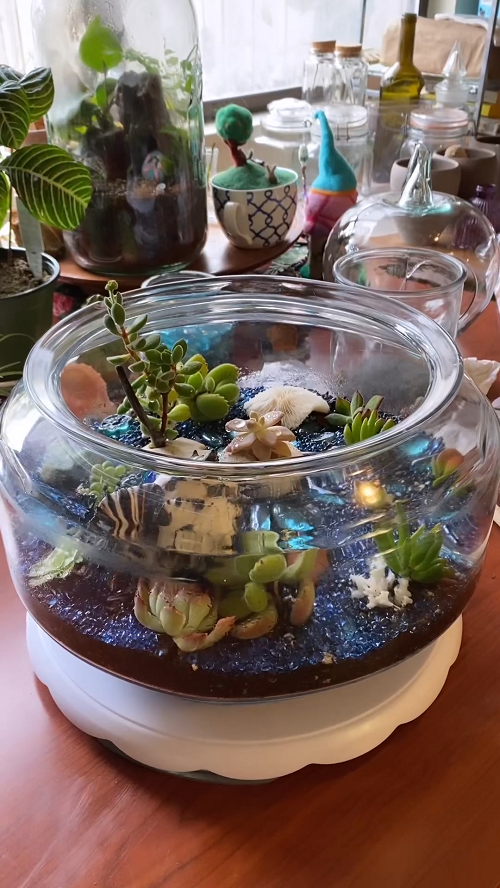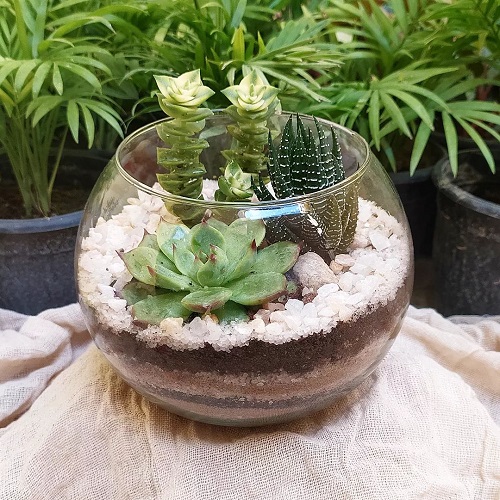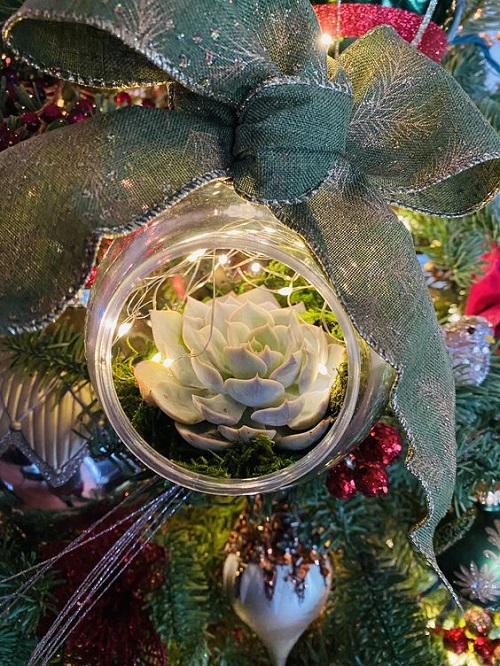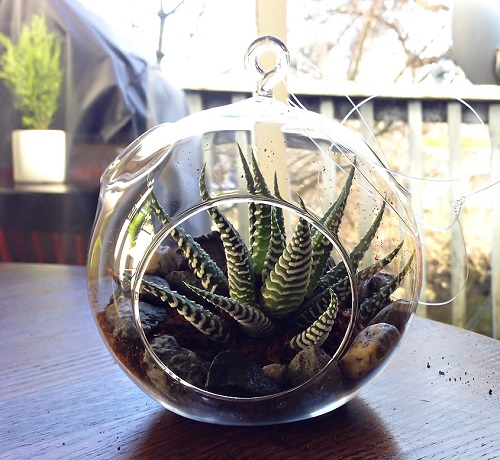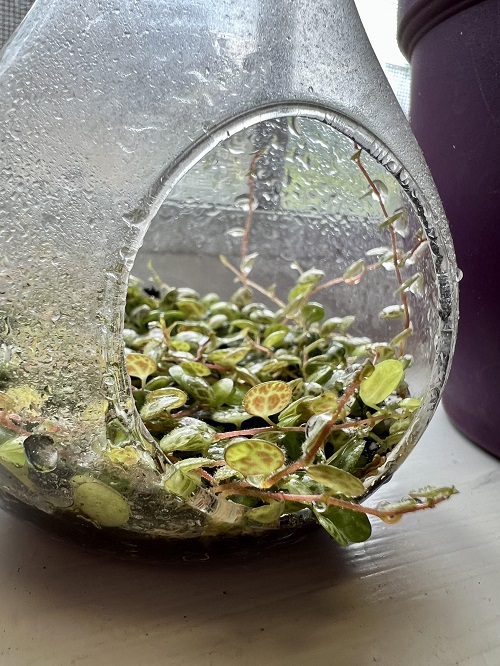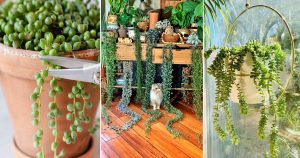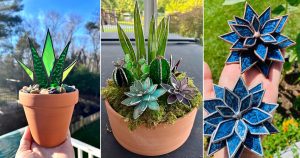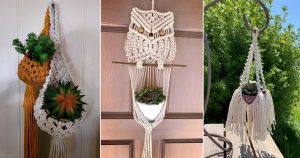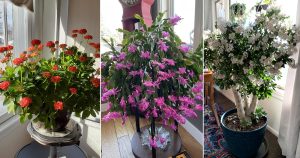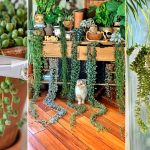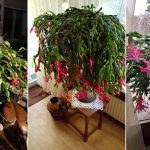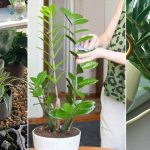Looking to create a mini greenhouse effect in your home? Well, You should have a look at these Succulent Plants for Terrariums!
Terrariums with succulents are a great way to enhance your indoor aesthetic value. Read the article below to learn which succulent you can grow in which terrariums. Plus, the ones to avoid, how to grow them, and other maintenance tips.
How to Choose Succulent Plants for Terrariums?
When selecting succulent or succulents for your terrarium, you need to keep in mind certain factors to ensure their harmonious flourishing.
Firstly, look for apt size and growth rate. Succulents should be small in size and slow-growing to prevent overcrowding. If you have multiple succulents, ensure they have similar light needs for uniform growth to safeguard other plants from becoming leggy or struggling to thrive. Choose plants that need indirect, bright sunlight.
Additionally, maintaining succulents will be easier if you select succulents with similar water needs. This will avoid overwatering and underwatering situations. Succulents should fit comfortably in the container, along with enough space for healthy growth and maintenance. Also, open-air terrariums have a moist atmosphere, so plants that can sustain humidity, such as spider and snake plants, should be used.
Tip: Succulents are available in a wide range of textures, colors, shapes, and sizes. You can mix and match different varieties based on your creativity and the visual beauty you desire!
Select The Type of Terrarium
Most people find it tedious to decide which type of terrarium to use for their succulents. Do not worry—we are here to help you out with a simple trick. First of all, you should make clear what type of plant and size of plant you are growing and which type you want to opt for in the terrarium. Open terrariums are the most popular and easy to maintain, among others. Tropical terrariums or closed terrariums are for plants that prefer humidity and can survive in enclosed environments.
Similarly, hanging terrariums are best if you are growing either for decorative purposes or for hanging plants. Tray terrariums look stunning and provide more open space than open ones! Plus, when you want to develop a self-sufficient ecosystem, bioactive terrariums are used, like microfauna plants—fungi. So, it’s enough to clarify which type you want to go for!
General Guide to Grow Terrarium Plants Succulents
Growing succulents in terrariums is fun and easy, and the good thing is that people with busy schedules or without green thumbs can do it with minimal maintenance. Start by gathering the necessary materials: a glass terrarium container, succulent plants of your choice, cactus or succulent potting mix, pebbles or rocks for decoration, sphagnum moss, activated charcoal, and a hand trowel. First, clean the container and fill it with decorative rocks or pebbles at the bottom to prevent water from pooling.
Place sphagnum moss to absorb water and maintain moisture levels. Add a charcoal layer to filter your plants’ water. Above that, create a bed for succulents using a succulent mix. Make holes with a trowel and place mini succulents inside. Secure them by pressing them, ensuring they are stable in place. Terrariums should be placed in bright, indirect sunlight, as harsh sunlight can cause them to die. Water only to make the soil soggy and avoid dampness or overwatering. And once a month in winter. Use a mist bottle to water rather than pouring directly!
Tip: Adding a decorative stone layer on top would be great for visual appeal. Plus, they will keep excessive moisture in check.
List of Best Succulents for a Terrarium
These succulents are well-suited for the controlled environment of terrariums, offering unique textures and colors. You can trim off dead or dying leaves whenever needed and rotate the terrarium every few weeks for even growth. Also, if the plant becomes overcrowded, repot it and avoid using excessive fertilizers.
1. Echeveria
Echeveria has more than 200 species and multiple hybrids. All the varieties have different shapes, colors, and textures. Features thick, fleshy leaves arranged in tight rosettes that grow close to the soil. They can easily thrive in open and closed terrariums with dry soil, bright light, and controlled humidity—water in 7-10 days. Avoid overwatering and excess moisture!
Some popular succulent plants for terrariums are—Echeveria ‘Blue Rose’, Echeveria ‘Lola’, Echeveria ‘Perle von Nurnberg’, Echeveria ‘Afterglow’, Echeveria ‘Black Prince’, Echeveria ‘Raindrop’, and Echeveria ‘Doris Taylor’ (Woolly Echeveria).
2. Haworthia
It is a genus of 150 species of succulents that are famous for their small shape, striking foliage, and resilient nature. These plants are primarily found in South Africa, typically in semi-arid regions, under the shades of other vegetation or rocks.
They are the best option for open terrariums, as the setup has enough air circulation and low humidity to safeguard the plant from rotting. They need well-drained gravel soil (succulent mix). Placing a small rock or gravel layer at the bottom is preferable. You can group multiple succulents to make the arrangement appealing.
Well-known varieties include Haworthia cooperi, Haworthia fasciata, Haworthia attenuata (Zebra Plant), and Haworthia reinwardtii.
3. Sempervivum (Hens and Chicks)
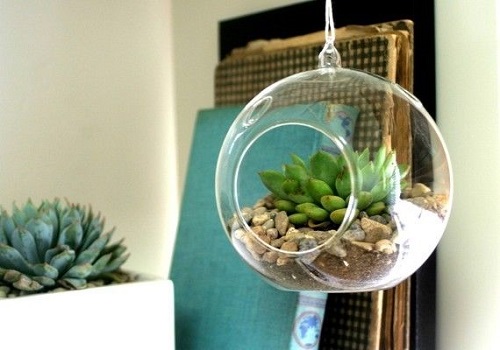
Also known as houseleeks, they are native to North America. There are around 40 species, and the plants can survive in arid regions due to their leaves’ water-storing capacity.
The hardiness and ease of maintenance make them a good fit for rock gardens, planters, and terrariums. Although these plants prefer full sun and dry, sandy, well-drained soil, they can thrive in different shades of sun as well. You can place your setup on a south-facing window to meet your needs.
4. Lithops spp. (Living Stones)
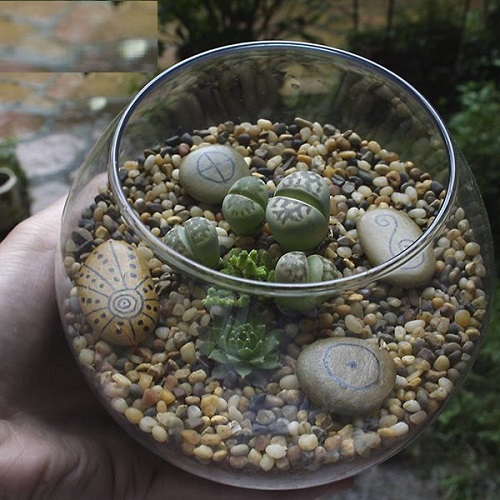
Lithops are fascinating plants, often known as succulents that look like lips or stones. Native to Southern Africa and are generally small, ground-hugging, with two fused leaves. They prefer dry, rocky areas with high temperatures and little water. Lithops contain around 37 species and many varieties and can live up to 40-50 years.
These plants usually grow 1-2 inches in diameter and rarely more than an inch in height. Ideally, thrive best in rocky gardens, containers, and terrariums. Considered as not toxic to pets and humans but should not be consumed.
5. Peperomia prostrata (String of Turtles)
This specimen belongs to the Peperomia family and has a vining structure with a decorative turtle shell-like leaf pattern. It is a must-have decorative addition to your terrarium collection. To preserve the leaf’s intricate designs, keep it in bright indirect light and avoid direct sunlight.
Grows slowly and compactly, reaching up to 12 inches in length, and thrives in warm, humid areas, such as hanging baskets or tabletop displays. Protecting it from cold drafts and sudden temperature shifts may stress the plant. Indoors, a temperature between 65 F and 85 F with moderate to high humidity makes it cascade beautifully.
6. Schlumbergera bridgesii (Christmas Cactus)
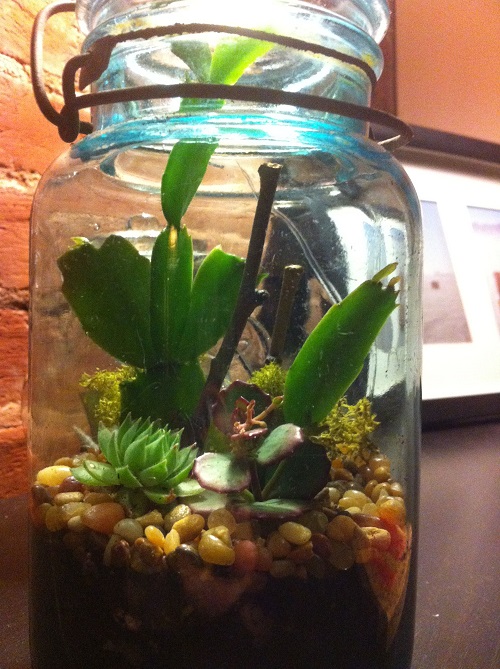
While it is commonly known as a Christmas cactus, it is actually a succulent with 300 hybrid varieties. It is a winter flowering houseplant with segmented stems and funnel-shaped flowers, ideal for open terrariums.
To make it bloom, the plant should receive long, continuous dark periods, approximately 12 hours, every night, in the temperature range of 50-60 F. It prefers humid conditions and moderate watering. You can maintain the humidity with the pebble tray method. Keep it in a bright spot away from heat sources.
7. Kalanchoe (Kalanchoe spp.)
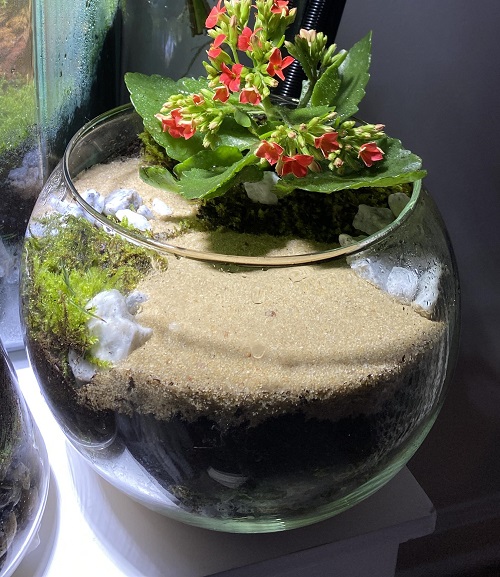
Kalanchoe is a great ornamental indoor plant, popular for its long-lasting bloom, which can last up to eight weeks. It is native to the tropical rainforest of Madagascar. Prefers high humidity, moist soil, and indirect sun.
Do not plant it in covered terrariums with soil pH that is too acidic. Prefers well-draining soil (a mix of coco fiber sand and peat moss) with good air circulation. Beginners can grow it easily due to its forgiving nature!
8. Rhipsalis baccifera (Mistletoe Cactus)
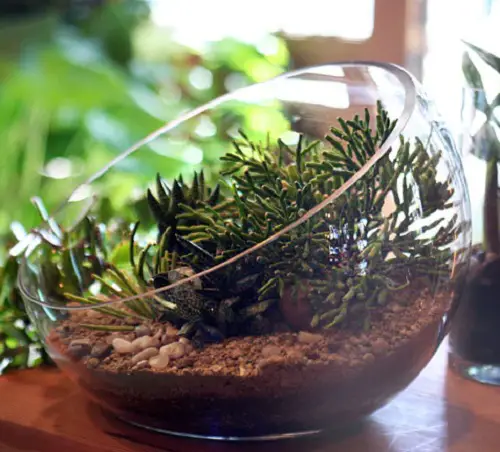
The Mistletoe cactus is a great choice for indoor hanging terrariums. It is a type of epiphyte succulent with many trailing, cylindrical stems. Thrives best in bright, indirect light, high humidity, and moist soil with good drainage.
However, it is easy to manage and can tolerate a variety of conditions, but you need to be aware of spider mites, aphids, and mealybugs. Overwatering can cause root rot, and less irrigation will make the stems brown.
9. Aloe Vera
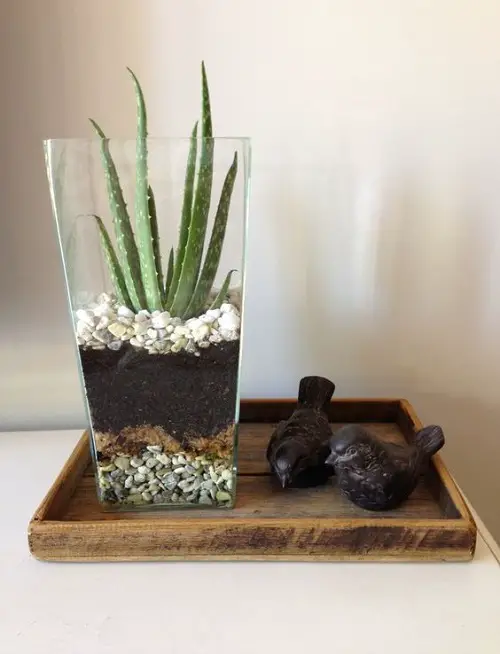
A succulent herb ideal for both indoors and outdoors, it is known for its uses in desserts, yogurt, beverages, and medicinal purposes. It provides soothing effects for burns or sunburns. It is really good, but some people may be allergic to its sap, so note your skin reactions to its usage.
Aloe vera has thick, basal leaves with pointed ends, which contain gel-like sap. It thrives in bright, indirect light in open terrariums. To water it, use a spray bottle to wet the soil and avoid over-irrigation.
Things to Remember!
Avoid Cacti and the following succulents for terrariums: Succulents like Aeonium, Graptoveria, Graptopetalum (Ghost Plant), Graptosedum, and Sedeveria are generally not suitable for terrariums due to their preference for dry conditions and good airflow.
The high humidity levels and limited air circulation typical of terrariums are not good for these plants. It can lead to rot and other issues, making it challenging to maintain their health and longevity in such a mini ecosystem.
Fact: You must typically avoid those succulents that need direct exposure to the sun because, in terrariums, you cannot fulfill that condition, right?!
That’s it from our side! If you want to grow succulents in terrariums, you have the list and the guide, too! Try them out and share your valuable feedback with us!

